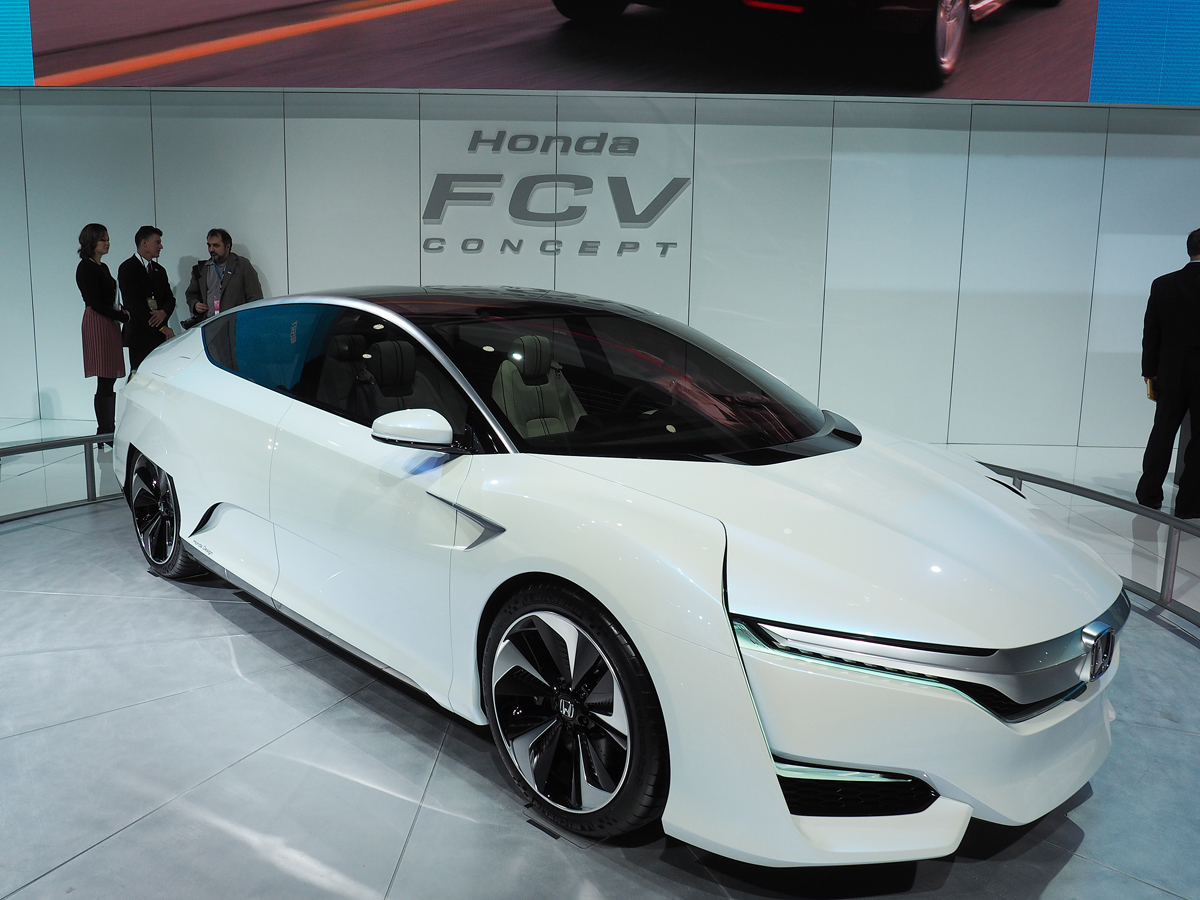FCV Concept and hydrogen-based society: Honda Sustainability Report


Hyundai has been receiving a lot of attention lately for being the first to bring a production hydrogen-powered vehicle to the Canadian market with the Hyundai Tucson FCEV. Toyota did the same for the American market with the Mirai. But one that doesn’t get talked about as much is Honda’s version, the FCV Concept, teased to the public earlier this year at the North American International Auto Show in Detroit.
The FCV Concept was widely discussed in Honda’s recently-release 2015 Sustainability Report, a document for stakeholders that summarizes initiatives the automaker is taking as it pertains to the environment, safety, quality and society.

Set to launch in Japan next year, followed by the US and Europe thereafter, the FCV can be filled up in three minutes and will have a driving range of approximately 480 kilometres, putting it in the same ballpark as the Tucson (refuelling time of under five minutes and 420 km range).
This latest hydrogen venture is actually the company’s third crack at the technology. The FCV Concept is a successor to the FCX Clarity, resembling a curvier Civic, debuting in 2008. The Clarity succeeded the model known just as the FCX, which was the world’s first fuel cell vehicle to get the green light from the US Environmental Protection Agency when it was developed in 2002.

While previous iterations were tame stylistically, the FCV is anything but. The exterior is low, wide and has a grille that spans the entire front fascia, splitting the upper turn signal strip and lower headlights on both sides of the car.
Inside, Honda says “the interior strives to achieve harmony between man and machine by taking advantage of new powertrain packaging efficiencies delivering even greater passenger space than its predecessor.” Mostly featuring a monotone black/white colour scheme, the flat-bottom steering wheel has a unique U shape and there is a strong design theme using straight lines throughout the cabin. Passenger capacity has been increased from four to five.

As per the above referenced more efficient powertrain packaging — the revised fuel cell stack is 33 per cent smaller than before. Power density has also improved by 60 per cent.
As innovative as the FCV is, what’s arguably more impressive is Honda’s plan for growing what it calls a hydrogen-based society. Involved in that is working with governments and other organizations to come up with easier and environmentally friendlier ways of creating the clean energy.

Together with industrial manufacturer Iwatani Corporation, they have devised a Smart Hydrogen Station utilizing an “electrolyser” system that can generate hydrogen with tap water and electricity. The first units were installed at two different locations in Japan last year. Honda has also committed to furthering the hydrogen movement in North America by aiding with the construction of additional infrastructure — last year it announced it would provide $13.8 million in financial assistance to build more fuelling stations in the state of California.

